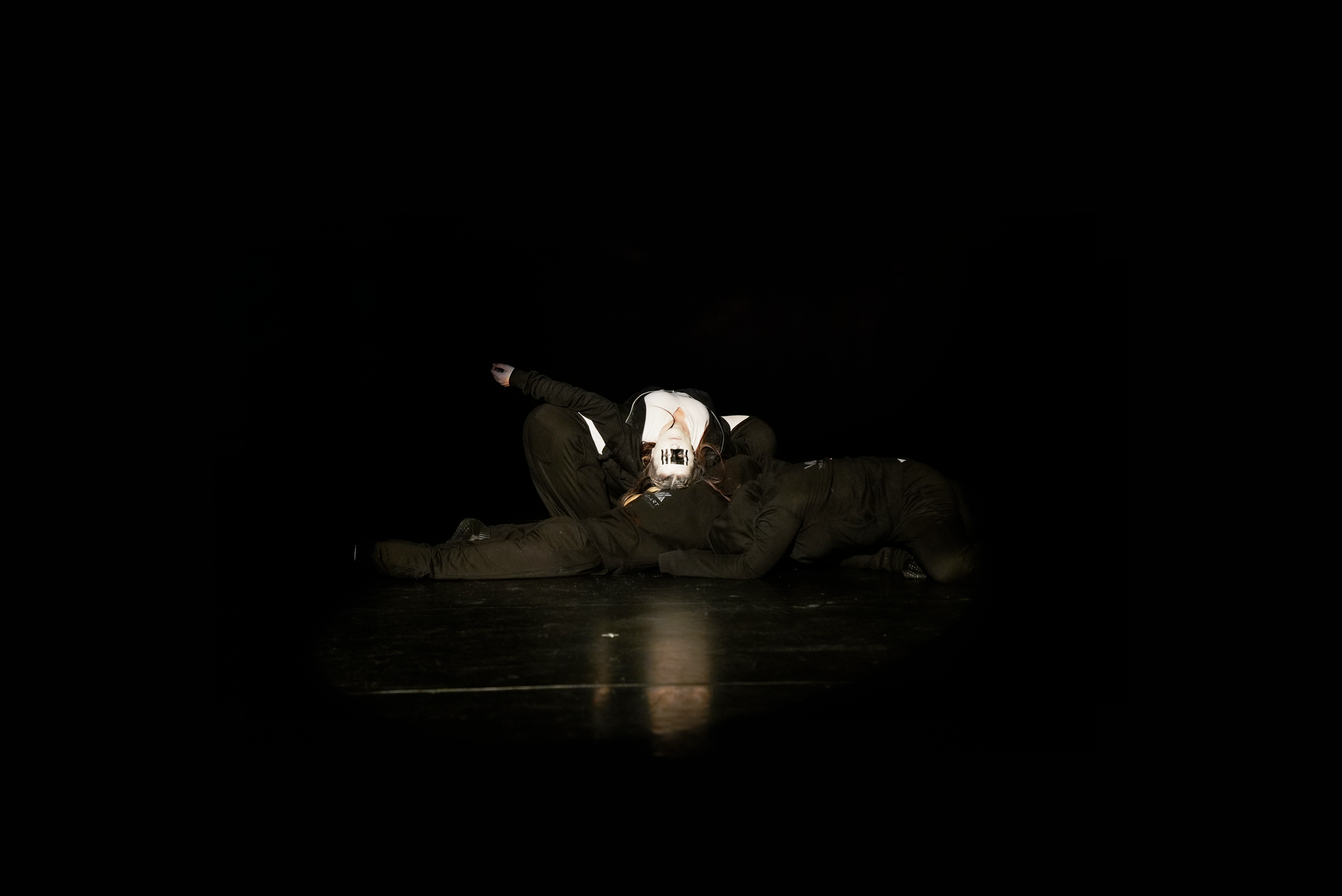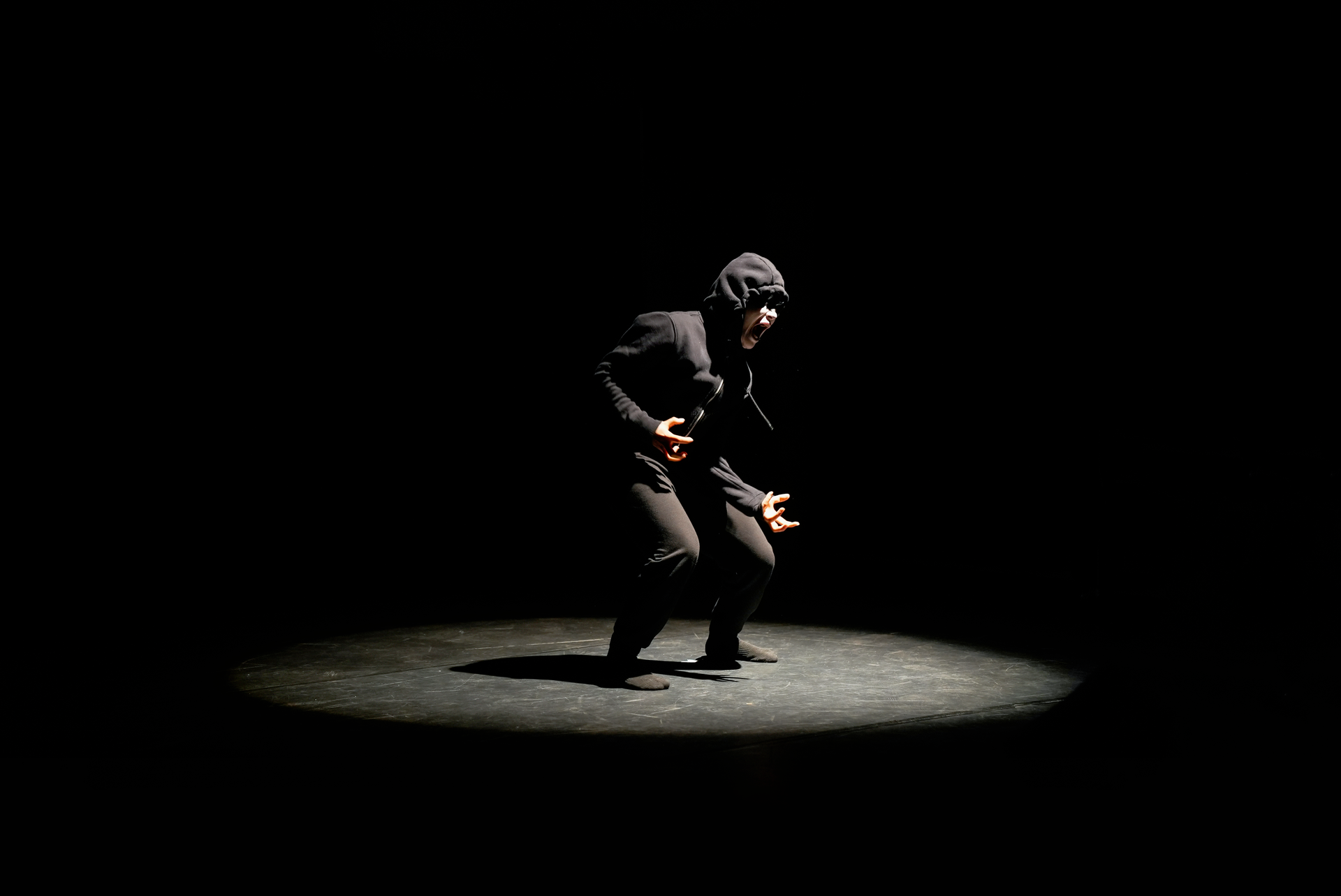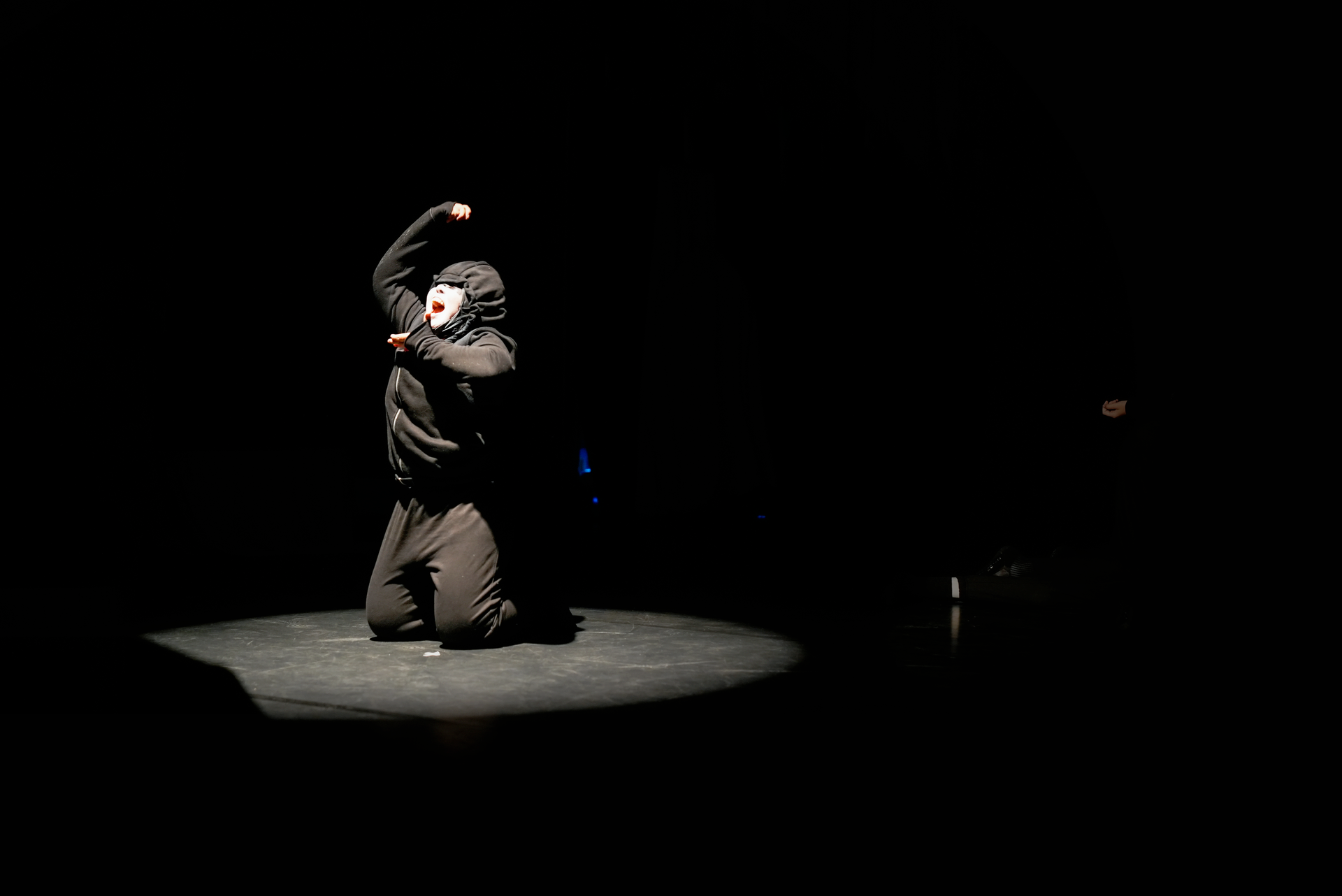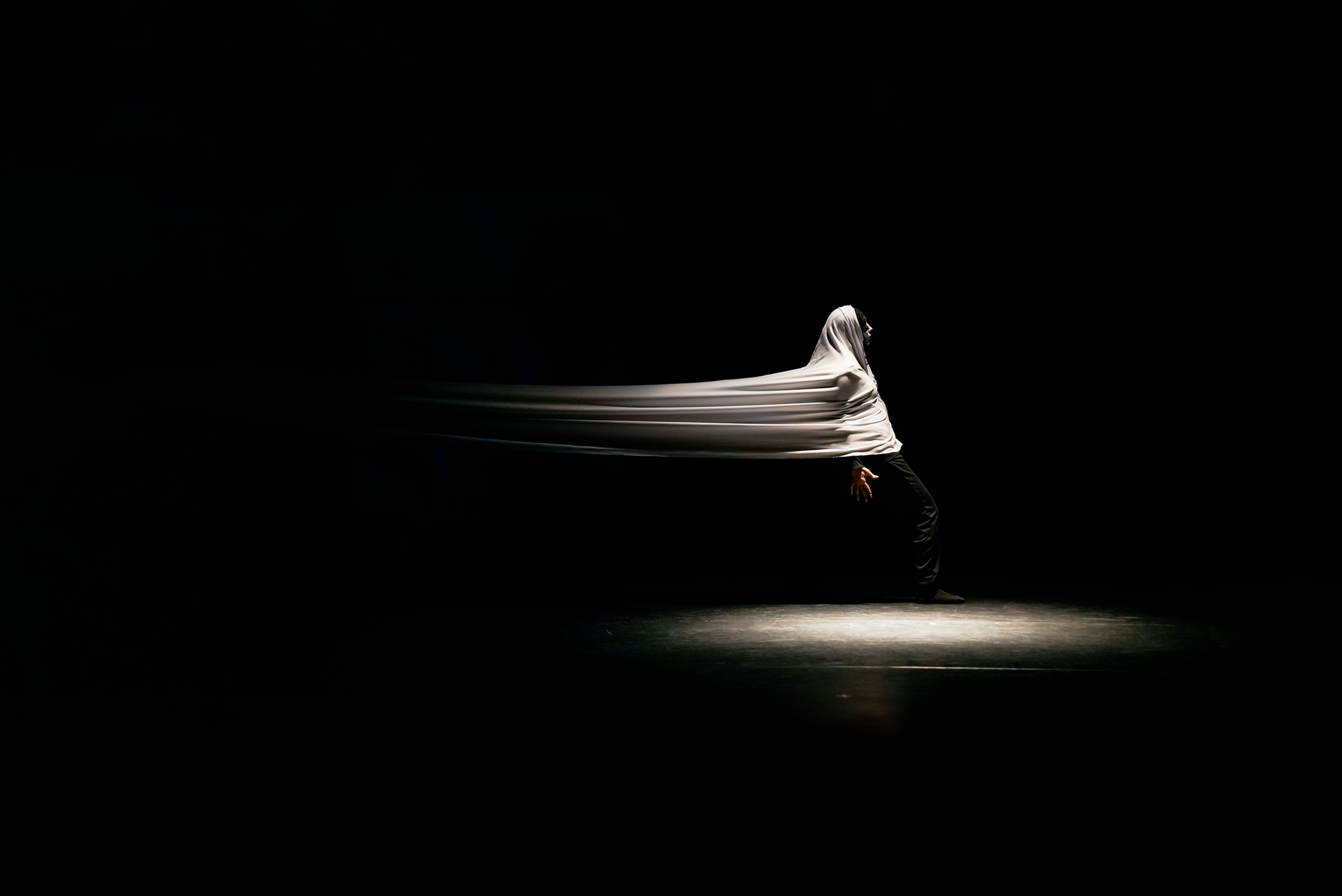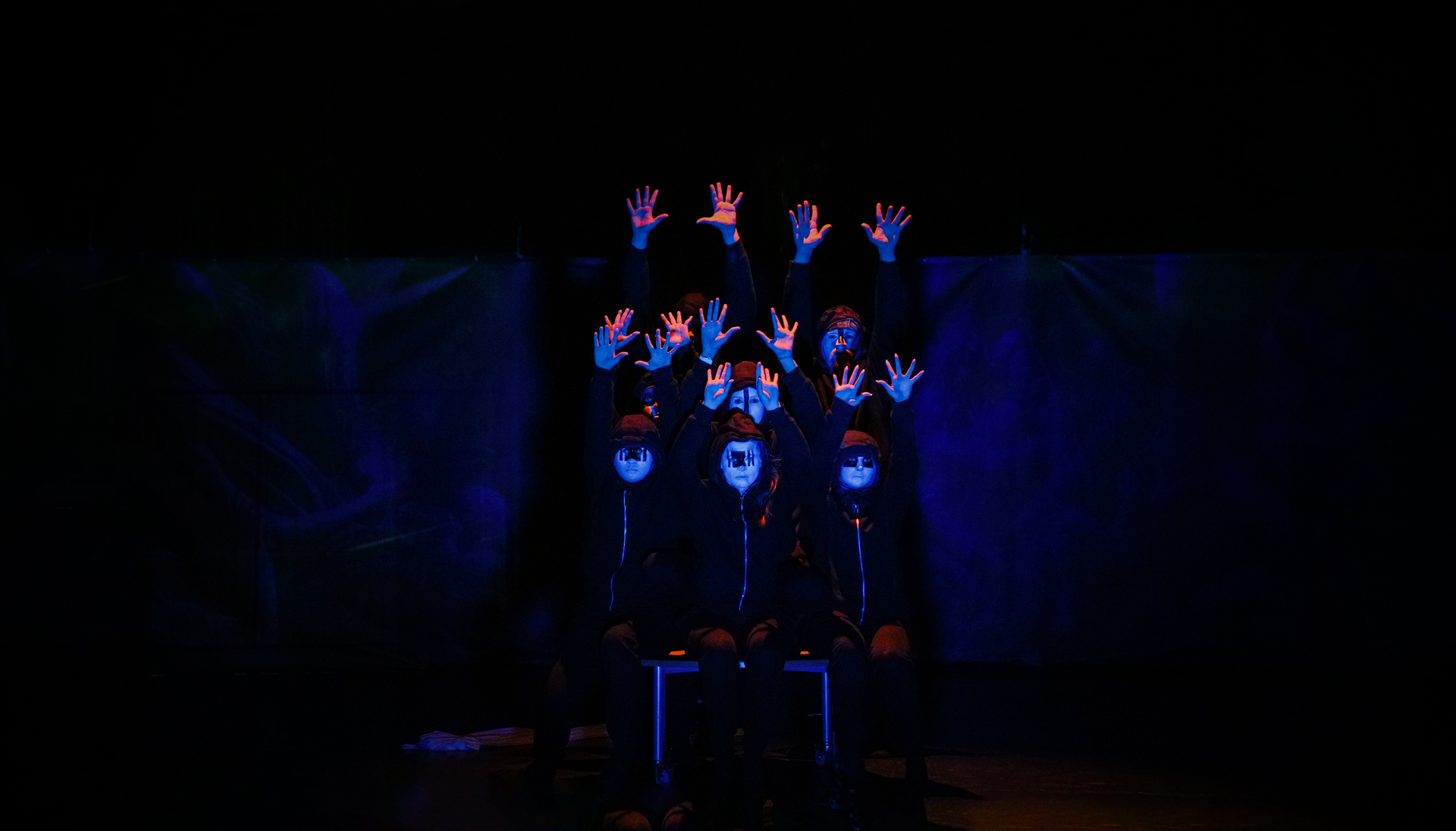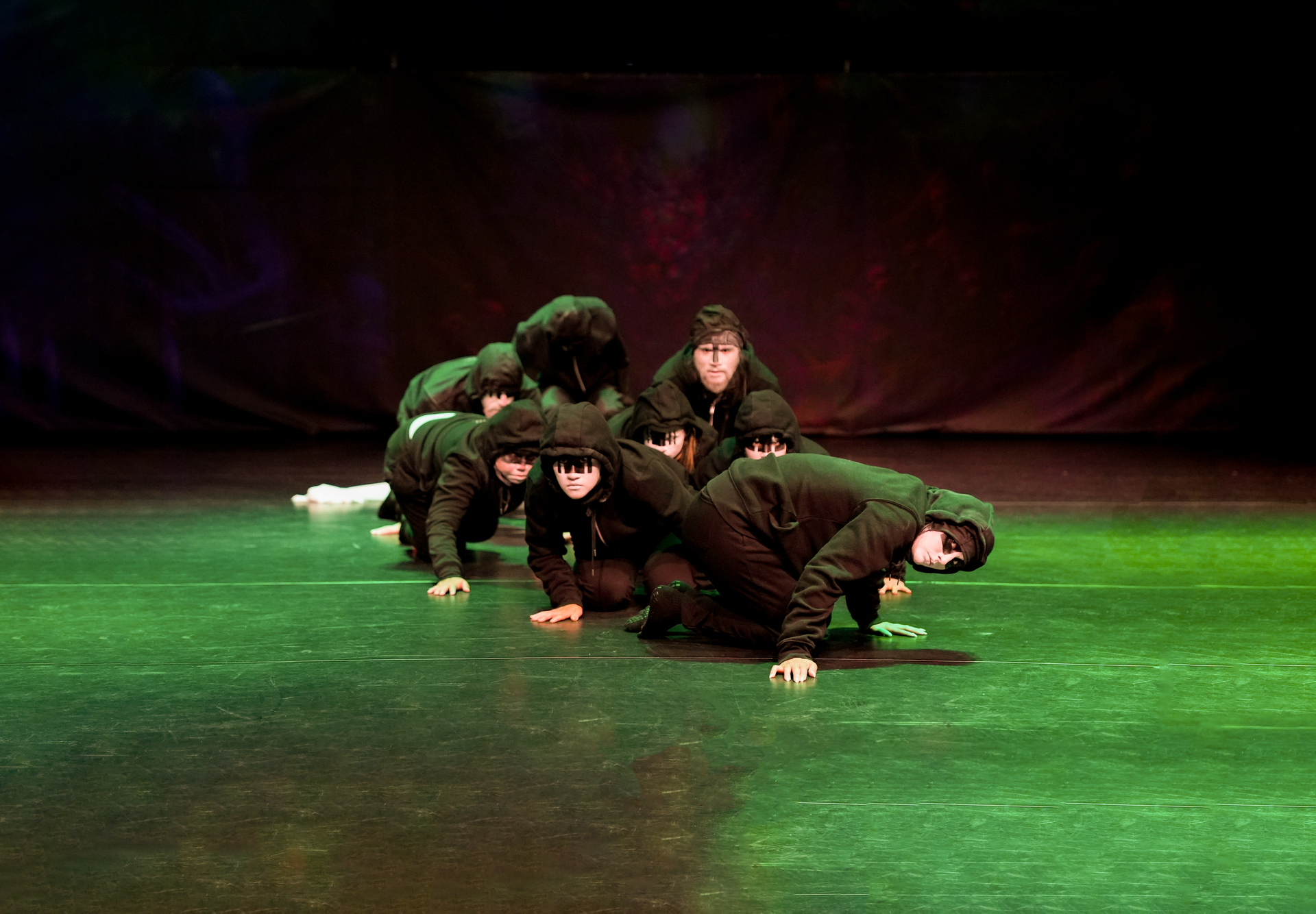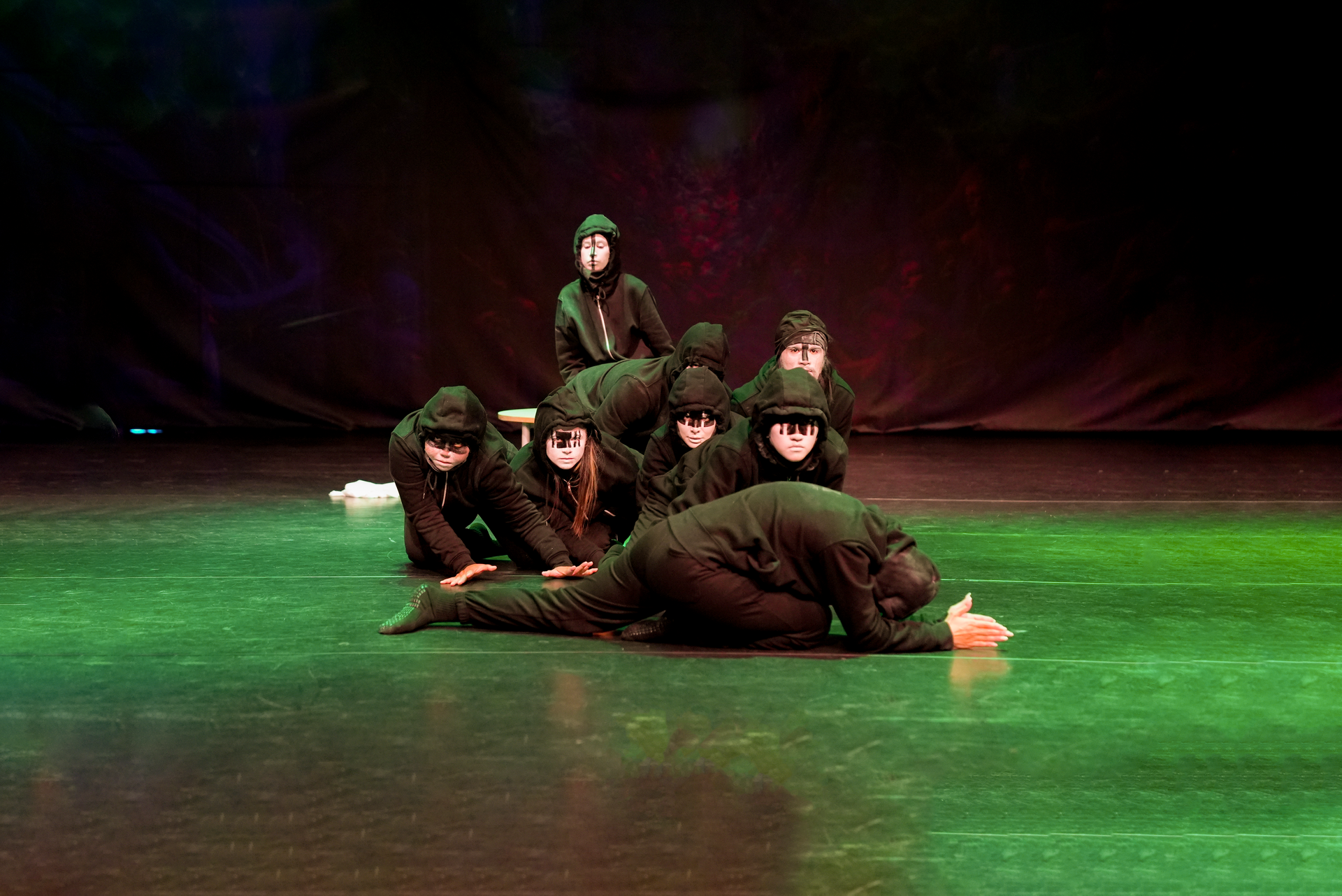
PRISON
WE-THEATER
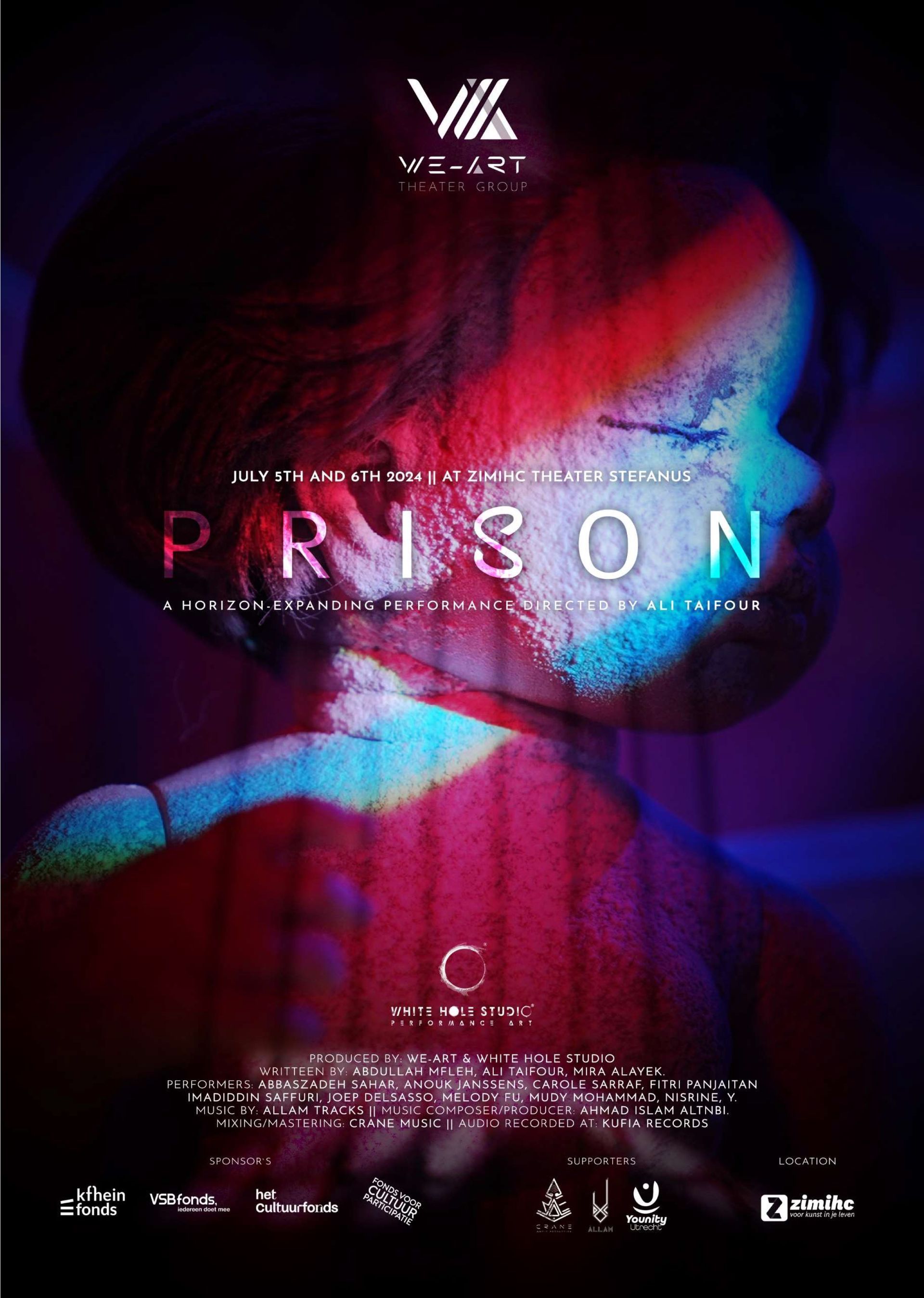
Title: PRISON
Director, Writer, and Scenography: Ali Taifour
Co-Writers: Abdullah Mfleh, Mira Alayek
Co-Director: Imadiddin Saffuri
Production by: WE-ART & White Hole Studio
Performers: Abbaszadeh Sahar, Anouk Janssens, Carole Sarraf, Fitri Panjaitan, Imadiddin Saffuri, Joep Delsasso, Melody Fu, Mudy Mohammad, Nisrine , Y.
Music by: ALLAM TRACKS
Music Composer/Producer ; Ahmad Islam Altnbi
Mixing/Mastering: CRANE Music
Audio Recorded at: Kufia Records
Production Manager: Imadiddin Saffuri
Production Assistant: Carole Sarraf
Production Team: Hooman Karimi, Islam Altnbi, Jacob Herrie, Jamaliddin Assad.
Video and Photography: Ali Taifour, Gul Suzuki, Taha Bensedik.
Set Design: Ali Taifour, Carole Sarraf, Imadiddin Saffuri, Islam Altnbi, Joep Delsasso, Kees Delsasso, Marije den Otter, Melody Fu, Pjotr van Leeuwen, Sara Ali, Sylvie de Kubber.
Fine Art Painter: Pjotr van Leeuwen.
Hair Stylist: Rania Sulaiman, Sara Ali.
Costumes:
Huda Murjana.
Stage Lighting Technicians:
Rachid Challaoui, Rogier Janssen.
Translation:
Carole Sarraf, Imadiddin Saffuri, Joep Delsasso, Mudy Mohammad.
Performers' Trainers:
Ali Taifour, Bart Durand, Iryna Krasnenko, Marike Minnema.
Graphic Design:
Ali Taifour.
Type of presentation: WE-THEATER
Duration: 90 min
location & Date:
UTRECHT, 05/06-07-2024
PRISON
WE-THEATER
"PRISON" is a theatrical journey that ventures into the complex, multifaceted nature of human confinement. It goes beyond the physical dimension, delving deeply into emotional, societal, and existential cages that individuals face throughout their lives. As a bold example of the WE-THEATER style, this performance emphasizes collective storytelling, immersive engagement, and the shared emotional experience between the audience and performers.
Combining powerful physical performances, innovative lighting design, and emotionally charged movements, "PRISON" presents a poignant exploration of the universal human struggle for liberation. From its conception to its execution, "PRISON" embodies the essence of contemporary theater: bold, thought-provoking, immersive, and grounded in the collaborative spirit of
WE-THEATER.
Concept of the Performance
"PRISON" delves into the multifaceted prisons that shape human existence—whether emotional, psychological, societal, or systemic. These metaphorical confinements, often invisible yet deeply rooted, challenge our understanding of freedom, identity, and humanity. Through a series of thought-provoking scenes and interactive experiences, the performance invites audiences to reflect on the constructs that govern their lives and question the very essence of freedom.
The Journey of the Idea
The concept of "PRISON" was conceived by Ali Tefour in 2012 amidst the turmoil of war in Syria. Seeking an escape from the chaos, Tefour explored the depths of human emotion and the complexities of freedom. Over the years, this vision matured, drawing inspiration from conversations with writers like Mira Al Ayek and Abdullah Mufleh, and evolving into a narrative that transcends boundaries and eras. The project's journey began with a short film during the pandemic and later transformed into a full-fledged theatrical performance, blending diverse perspectives from performers and collaborators.
Performance Structure
"PRISON" unfolds through three intertwined timelines:
- From Future to Past: A dystopian reflection on unfulfilled promises, offering cautionary insights about humanity’s trajectory.
- From Past to Future: A linear narrative tracing the evolution of societal constructs, urging for a better legacy for future generations.
- The Present: A shared space where performers, audiences, and organizers engage in real-time, witnessing the unfolding of the performance.
The production breaks traditional spatial boundaries, blending collective and individual experiences through dynamic stagecraft and interactive storytelling.
The Audience Journey
Upon arrival, audiences are greeted by a “guard” who introduces the performance's premise and guides them into the theater. The experience alternates between seated collective scenes and individual explorations of the performance’s unique cells. Each phase offers a deeper understanding of the themes, culminating in a powerful finale that merges the individual and collective narratives.
The Cells
- Individual Cells (10): Arranged in a "U" shape, symbolizing "you," these cells represent specific societal confinements: family, knowledge, work, religion, relationships, love, social media, money, authority, and waiting. Audiences navigate these cells, each designed with unique scenography to evoke introspection.
- Collective Cells (3): Positioned centrally, these scenes represent shared struggles: beauty, passports, and life itself. The interplay between individual and collective cells forms the Arabic letter "ن" (noon), symbolizing "we" and the inkpot, merging individuality and unity.
Design Philosophy
The architectural design of "PRISON" reflects a profound interplay of symbolism and purpose. The "U" shape of the individual cells emphasizes personal reflection, while the overall composition spells "نحن" (we) in Arabic, underscoring collective identity. This duality mirrors the philosophical essence of the performance—an exploration of individuality within the collective.
Artistic Vision
"PRISON" challenges the constructs of traditional performance art, employing avant-garde choreography, experimental lighting, and symbolic props. Its goal is to dissolve barriers between the performers and the audience, creating an immersive dialogue that transcends the confines of the stage. This journey of discovery aims to redefine the boundaries of contemporary performance, inspiring new perspectives on freedom and coexistence.
Audience Reception:
The experience of PRISON begins the moment the audience arrives. The organizing team, dressed in thematic uniforms, sets the tone with a welcoming process accompanied by soft thematic music blending nature sounds, childlike melodies, and Sufi-inspired instrumental tones.
At the entrance, attendees are greeted by a warden, who scans their tickets and provides a detailed event guide. As they proceed to the waiting area, a playful security check adds a unique twist to the experience. Finally, before the performance begins, another warden addresses the audience with a thought-provoking introduction:
"Welcome to 'PRISON,' an extraordinary journey into the depths of intellectual, psychological, and emotional confinement. Through this production, we seek to challenge societal norms and explore the essence of true freedom."
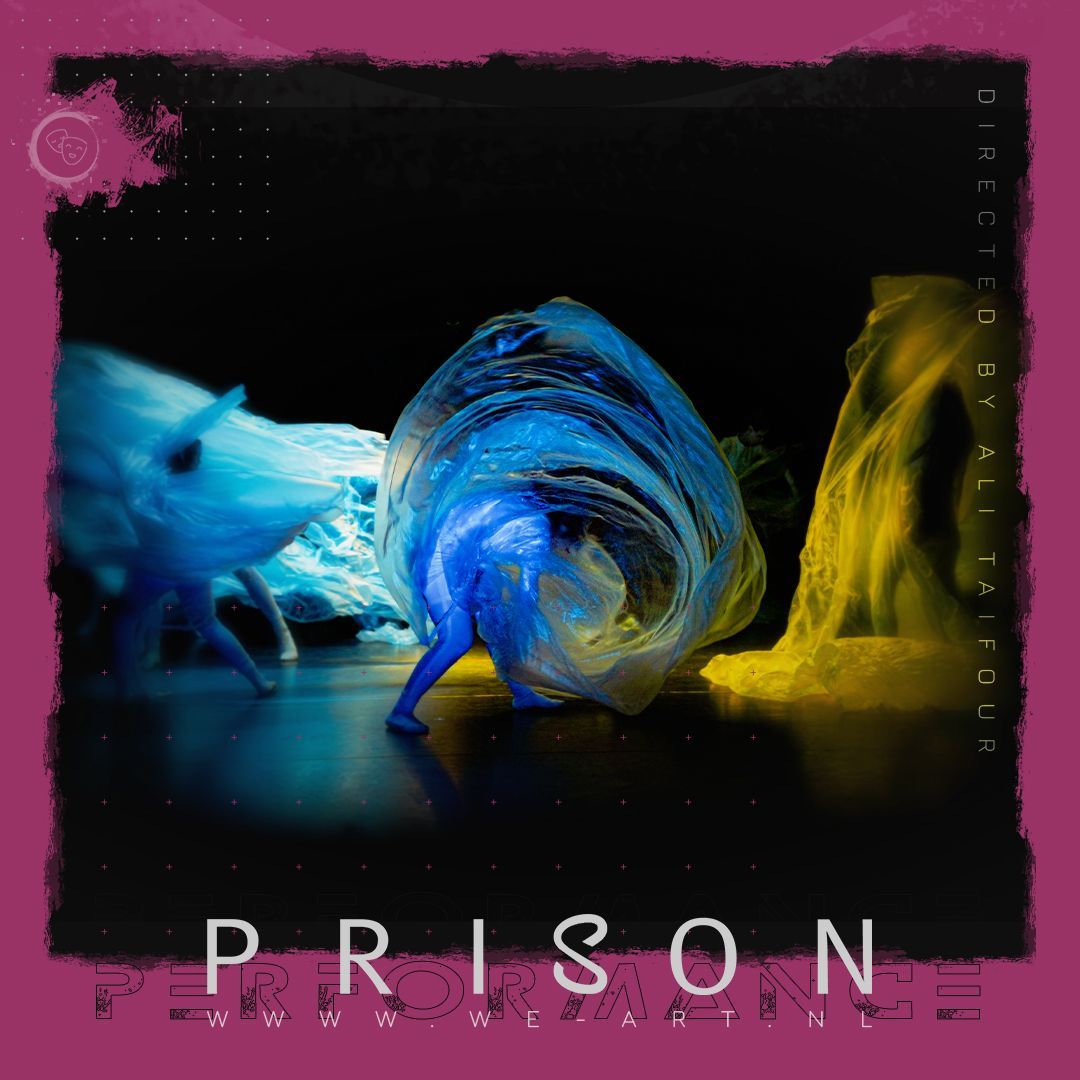
Scene 1: The Prison of Beauty
The first scene, The Prison of Beauty, sets a deeply immersive tone for the performance, blending technical precision with profound symbolism. This collective scene unfolds in the center of the stage, surrounded by an audience seated in structured rows, creating a sense of both observation and involvement.
Music and Soundscape:
The auditory experience is a layered interplay of contrasting sounds. A serene background includes the main theme music, children's toy noises, gentle hums, and lullabies, evoking innocence and nostalgia. This is punctuated by natural sounds like rustling forests and crashing waves, occasionally disrupted by jarring “beeps” of product purchases. The gradual intensification of heartbeats mirrors the rising tension and emotional depth as the scene progresses. Toward the latter half, the soundscape transitions to sharp, chaotic rhythms, evoking unease and confrontation with themes of consumerism and societal expectations.
Lighting Design:
The scene begins with soft white spotlights illuminating the performers as they stand frozen in their "prison," creating an atmosphere of anticipation. As the music develops, the lighting shifts to follow the performers, adding emphasis to each deliberate movement. Sudden bursts of harsh green light and angled shadows later heighten the drama, visually contrasting freedom and entrapment. Finally, a striking image of a blue-lit backdrop featuring sculptural hands emerges, symbolizing the societal grip on beauty standards.

A 28×3 meter blue-lit backdrop of intertwined hands symbolizes societal constraints and beauty standards.
Performers and Choreography:
The performers occupy their positions on stage before the audience arrives, establishing a sense of confinement within their designated spaces. The choreography evolves in sync with the music: the performers' initial rigid, mechanical tremors—representing conformity—gradually transition into frantic, chaotic movements. Pivotal moments include three synchronized “pulses” signifying themes of purity, instinct, and self-discovery, followed by slow, deliberate movements toward a central table. Performers interact with elastic fabrics and props, symbolizing societal expectations that both bind and define them.
Individual actions are equally compelling. One performer raises her finger as if discovering beauty for the first time, gently caressing her covered body. Another strides with military-like precision toward a harsh spotlight, only to collapse into despair. These contrasting movements reflect the duality of strength and vulnerability under societal pressures.
Interactive and Immersive Elements:
The audience’s entrance is carefully staged, with "guards" directing them to their seats with polite yet unsettling smiles. Meanwhile, a filming team captures candid footage of the audience and crew, subtly weaving them into the performance’s narrative fabric. This intentional blending of spectator and performer dynamics reinforces the theme of complicity in societal constructs.
Symbolism and Narrative Progression:
The scene explores the innate purity of human identity at birth, juxtaposed against the societal impositions that shape and confine it. The recurring imagery of elastic fabrics and sculptural hands evokes the suffocating grip of cultural norms. Performers’ individual movements and spoken phrases—delivered in their native languages—further personalize this universal struggle.
As the scene concludes, performers slowly return to their starting points, their rigid postures echoing the oppressive cycle of societal expectations. The lighting dims, leaving only the haunting blue backdrop of hands, before transitioning into a short film projected onto a descending screen.
Key Themes:
This opening scene delves into themes of innocence, self-expression, societal conformity, and the commodification of beauty. The seamless integration of sound, light, and movement creates an atmosphere that is both captivating and thought-provoking, challenging the audience to reflect on their role in perpetuating or resisting these constraints.
The Prison of Beauty lays a powerful foundation for the rest of the performance, engaging viewers with its visual intensity, emotional depth, and unapologetically reflective commentary on identity and societal expectations.

